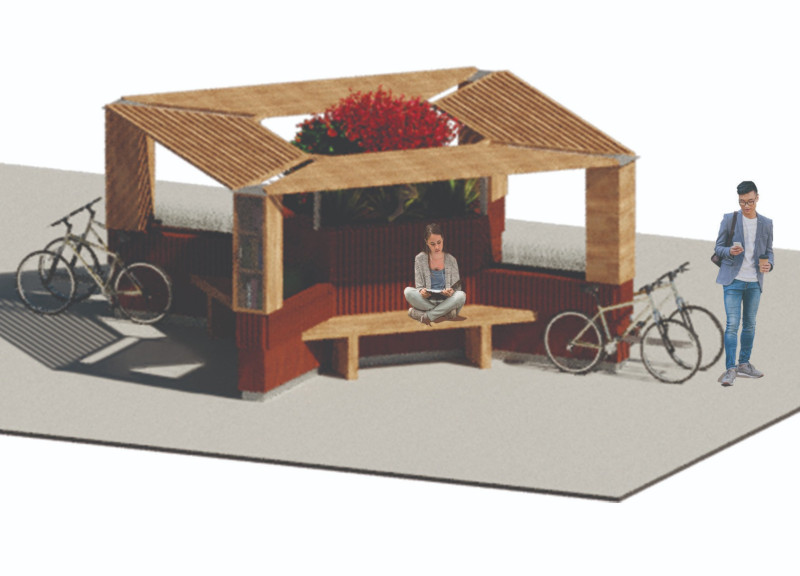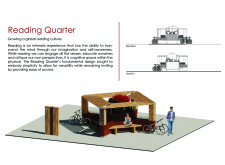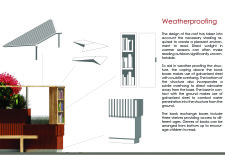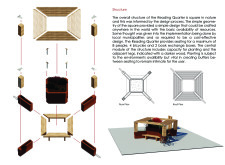5 key facts about this project
The Reading Quarter is a space designed to support and encourage reading within communities. Located in accessible areas, it seeks to create a welcoming environment where users of all ages can connect with literature. Its design focuses on making reading a comfortable and engaging experience, with a structure that combines simplicity, functionality, and interaction with the outdoors.
Design Intent
The layout of the Reading Quarter features a square shape that facilitates easy adaptation to different locations. This straightforward geometry allows the structure to fit well in urban settings, using basic resources for construction. The design accommodates seating for up to eight individuals and includes designated areas for bicycles and book exchange boxes. By promoting local engagement, it encourages community members to gather and share their love of reading.
Spatial Organization
The arrangement of spaces is carefully thought out to enhance user experience. Comfortable seating is paired with a central planting area, which creates visual interest and provides a natural buffer between different seating zones. This greenery not only adds aesthetic value but also helps users feel more connected to nature during their reading time. The thoughtful spatial layout invites people to linger, fostering a quiet and reflective atmosphere.
Weather Considerations
The design takes various weather conditions into account with features that improve outdoor comfort. The roof of the Reading Quarter offers adequate shading to protect readers from the sun during warm days. Subtle overhangs made from galvanized steel guide rainwater away from seating areas, ensuring a dry and pleasant environment. Additionally, the base of the structure is also lined with galvanized steel for protection against moisture.
Material Selection
The choice of materials reflects an awareness of both functionality and the environment. Wood forms the main structural component, valued for its availability and lower impact on the environment compared to other materials. Brushed aluminum is used for details like bike racks, providing durability and a modern touch. For the access points of the book exchange boxes, Perspex sheeting is selected to allow visibility while safeguarding the books inside. These material decisions reinforce the Reading Quarter's connection to its surroundings while serving practical needs.
Integrated planting brings life to the space, creating shaded areas that invite people to sit and read. The design encourages exploration and connection with literature, making it a valuable addition to any community.






















































